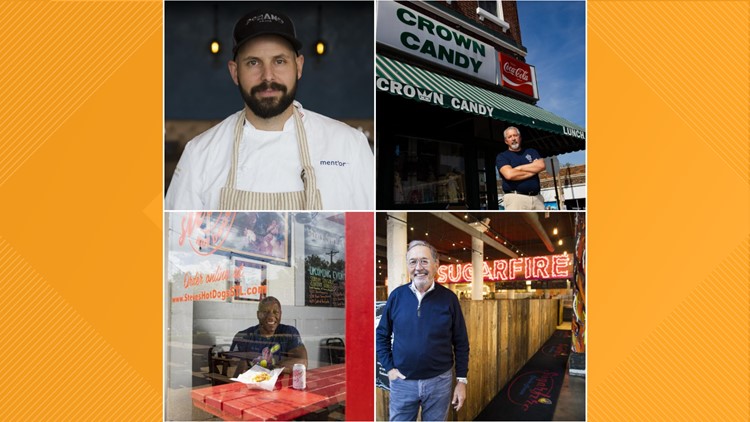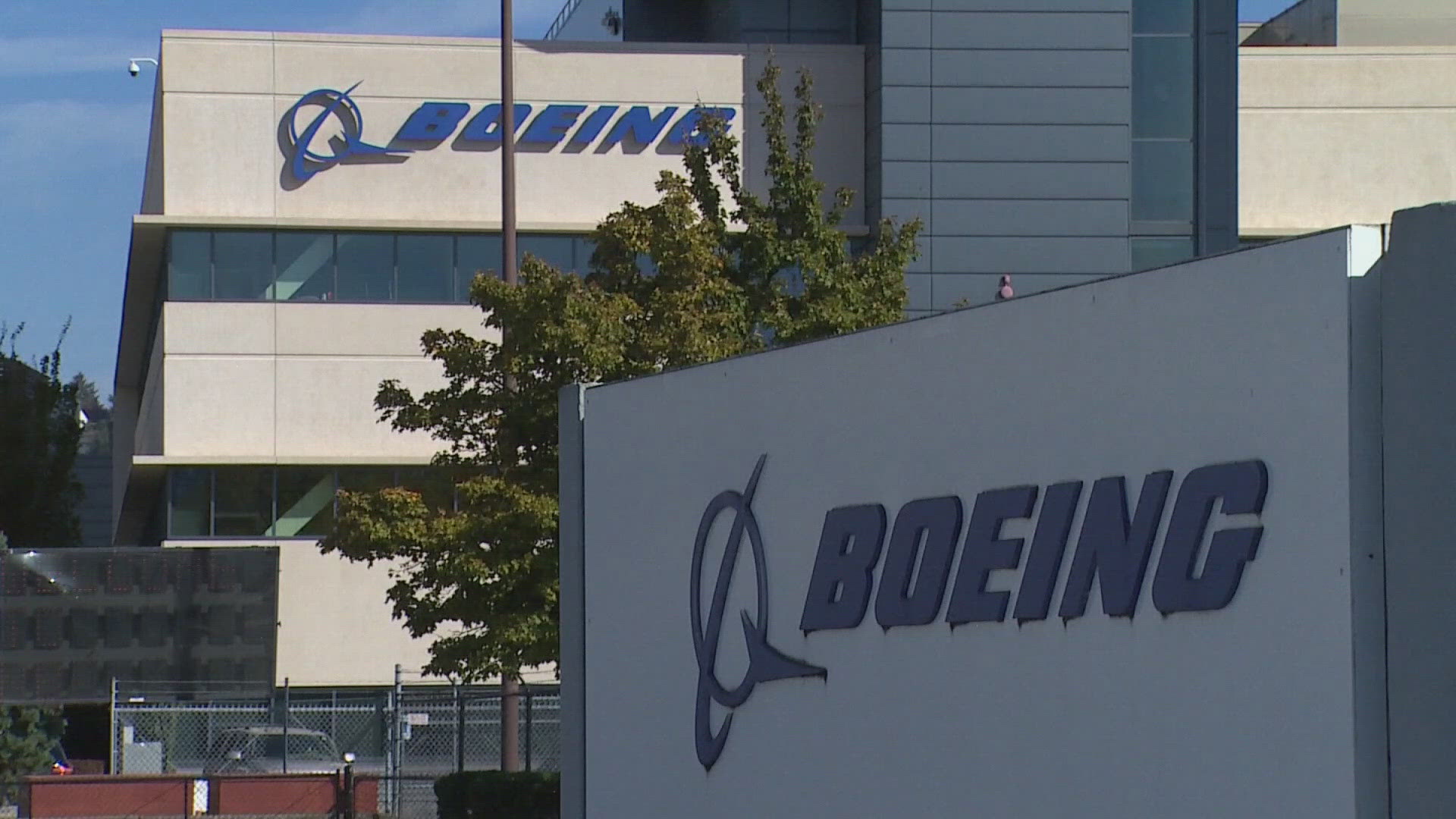ST. LOUIS — Lona’s Lil Eats has a wrap problem.
The casual Asian fusion restaurant in St. Louis’ Fox Park neighborhood refers to itself as “home of the original giant rice paper wraps,” which recently has been a challenge, considering owners Pierce and Lona Lou Powers haven’t been able to find a steady supply of the wraps for much of the past three months.
And even when they can get the wraps, the cost to buy them, and many of the ingredients within, has increased by as much as 20%. The wraps, which Lona’s first bought in 2008 from a Los Angeles supplier, were $48 a case in 2019, before the pandemic. They are now $72 when they can get them, which Pierce Powers said is only about half the time. On top of that, shipping costs to St. Louis have increased 25%.
"It's a centerpiece of our menu," Pierce Powers said. "A lot of people have been upset."
The double whammy of surging cost increases and supply chain constraints has forced restaurant owners across St. Louis to change the way they do business, whether it be cutting out middleman distributors, altering recipes or reluctantly boosting menu prices, all in the name of preserving as much profit margin as possible without passing too much of the burden onto customers.
Lona’s, for example, shifted from rice paper to flour tortillas, but Pierce said it’s just not the same, and customers know it. He declined to provide sales figures, but said they are down and that cost increases are cutting into the restaurant’s profits.
It’s an increasingly challenging quandary for restaurant owners that forces them to consider an existential question: How many adjustments to their business can they make to account for cost increases before it changes what they are or pushes customers away?
"It's tough because customers think everything is back to normal," said Gerard Craft, chef and owner of St. Louis-based Niche Food Group, which owns more than a dozen restaurants, most of them local. "In every single way possible, it is not normal at all. So even though restaurants look busy, they may not be making any money."
The Higher Cost Of a BLT
Andy Karandzieff thought he might have been one of the last holdouts.
The owner of Crown Candy Kitchen, the 109-year-old Old North establishment known for its heart-stopping BLT sandwiches and house-made confections, has been hesitant to raise prices, even as the cost of produce, protein and paper products has increased.
But as of two weeks ago, he couldn’t hold out any longer. The new menus were being sent to the printer. They would return with higher prices.
“I probably should have raised prices three weeks ago or a month ago, but it hurts,” he said. The restaurant's sandwiches range in price from $5.75 for egg salad to $12.25 for signature sandwiches, including the bacon-stacked "Heart Stopping BLT," according to the menu listed on Crown Candy's website. “I want us to be affordable, especially for people in the neighborhood. But I also have to pay my employees, pay for my products, and I have to make some money on top of that.”
Karandzieff anticipates a 10% increase in his prices “across the board,” which will take effect in coming weeks.
“If you wait too long (to raise prices), you’ll start losing ground, and you’ll never catch up,” he said.
Charlie Downs, co-owner of Sugarfire Smoke House, the St. Louis-based barbecue chain, said menu prices have also increased at the seven company-owned locations this year. “The first thing the supply chain puts strain on is people who run stores,” Downs said.
Downs spends and makes most of his money on meat products, which he said have increased in cost by about 20%-30% in the past year. The ideal solution to countering increased costs is by increasing revenue, Downs said. But even though restaurants appear busier than ever since Covid-19 restrictions lifted, revenue hasn’t returned at the same rate.
“If you look back to 2021, and now the first quarter of 2022, our revenue is about the same, but with higher costs,” Downs said. “We have a 10% margin at the bottom line. Take a half of that away (with higher cost of goods), you’re at 5%. And labor is taking another 3% of that away. We’re left with 2% profit instead of the original 10%.”
Pricing Strategies
Every restaurant owner tinkers with menu prices in their own ways, and it often varies by style of restaurant.
As a fast-casual chain, where families and large crowds go for a bite, Downs said it’s much riskier to raise menu prices out of fear it will deter customers accustomed to set prices.
“With BBQ, it’s family style,” Downs said. “We can only raise prices a certain percentage or families won’t come anymore.”
But it had to be done. Sugarfire has raised prices twice in the past year as the cost of dairy products and proteins like chicken have surged.
On the higher end of the dining scale, Craft has raised prices at Niche’s entire collection of about a dozen restaurants, which include Brasserie, Bowood, Pastaria and Cinder House in St. Louis.
But instead of doing it once a year — a general practice for restaurant owners as they review their finances — Craft has changed prices about every six months to help avoid aggravating customers with a sudden and more noticeable increase.
Even then, it isn't easy. Increasing prices on goods has been a “really interesting daily struggle,” he said. Prices are changing so frequently that it’s hard to stay ahead.
“By the time you get your next profit and loss statement, it’s too late,” Craft said.
Like Downs at Sugarfire, Craft expressed frustration about his steady, though largely unchanged revenue stream. Even though restaurants look busier, they may not be making enough to cover these increases, and in that case, they may be “essentially paying customers to come in,” he said.
By distributing price increases over six-months increments, Craft has avoided severe pushback from customers. But for others, the fear of increased prices pushing customers away is too big of a threat to ignore.
Steve Ewing, co-owner of Steve’s Hot Dogs, said customer frustration over increased prices on his menus has kept he and fellow co-owner Danni Eickenhorst from raising prices enough to compete with rising cost of goods.
“Ideally, we would match our increases in lockstep with the increases we’re seeing,” Eickenhorst said. “But we definitely do see there is pushback from the customer.”
Eickenhorst and Ewing agree they will have to raise prices, but only “to a place that’s comfortable” for their customers. Even with impending cost increases for Steve’s Hot Dogs, Ewing said raising prices to a rate that customers can absorb doesn’t cover the difference.
Ewing and Eickenhorst see themselves as having two options. They could increase the volume of food sales to cover their losses, which has proved nearly impossible considering increases in labor and product costs. Or they could raise prices roughly 40% to make up the difference, a margin they don’t think their customers would tolerate.
Ultimately, they landed somewhere in the middle: They raised prices about 15% in the past year and have taken a financial hit. Eickenhorst estimates the restaurant's gross profits have declined by around 15%.
“We’re just not going to be as profitable as we were last year,” Ewing said.
Read the rest of the story on the St. Louis Business Journal website.



